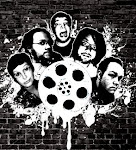Directed by Spike Jonze
Written by Spike Jonze and Dave Eggers, based on the book by Maurice Sendak
Starring:
Max Records
Catherine Keener
James Gandolfini
Paul Dano
Catherine O'Hara
Forest Whitaker
Chris Cooper
Where the Wild Things Are follows the story of an angry young boy named Max (Records). Frustrated and unable to deal with the difficulties his family is facing, Max lashes out against his mother and runs away into the night. After finding a boat tethered to the shore at the edge of some nearby woods, Max drifts out to sea and eventually finds the coast of the small island on which the film's Wild Things reside. By dealing with the actions of Carol (Gandolfini) and attempting to keep the group together, Max gains greater perspective on the effects of his own behaviour and begins to mature in the process.
More of a meditation on growing up than it is a children's movie, Where the Wild Things Are comes at a time when the first generation of children to grow up reading Maurice Sendak's book have (hopefully) begun to mature into adults themselves. Jonze's movie is aimed more at this group than anyone, using the framework provided by the book to tell a story about how the way we deal with others affects us and the feeling of loss that accompanies outgrowing parts of our childhood.
Where the Wild Things Are is notable for the way it takes the standard tropes of a fantasy coming-of-age tale (escape to a new world, facing fierce monsters, unexpectedly becoming a king, and so on) and uses them to build a character-driven story propelled mainly by social interaction. While the plot seems to follow a sort of dreamlike logic of its own at times, the film has an undercurrent of psychological complexity that drives the characters' interactions. Each of the monsters exemplifies a different emotional reaction to being faced by difficulties, with Carol becoming angry and violent, KW running away from the group's problems, Judith resorting to passive aggression, Ira hiding behind someone else (Judith), Alexander allowing himself to slip into the background and be dominated by others, and the Bull choosing to remain silent and withdraw from the group. By being forced to face each of these emotional reactions and attempt to keep the group in balance, Max must step outside of himself and learn to control his own wild behaviour. By watching the effects of Carol's tantrums and subsequent inability to take responsibility for his actions, Max comes to understand the effects his own outbursts have on others. Carol is a tragic figure, ultimately responsible for causing the changes that frighten him but lacking the emotional maturity necessary to understand this.
The monsters themselves are an impressive accomplishment both in terms of special effects and the strength of the script. Created by combining footage of actors in elaborate creature suits with the use of relatively subtle CGI to animate their faces, the monsters come across as real and organic in a way that most movie creatures fail to. Carol, Judith, Ira, KW, and Alexander are equally well-realized from a scriptwriting perspective, acting as sympathetic characters without coming across as harmless or defanged.
The care spent on the movie's visuals is commendable, with the Australian landscape where much of the movie was filmed coming across as simultaneously natural and magical. The use of colour is particularly interesting, with heavy use of warm, dirty, subdued colours to ground the more fantastical aspects of the visuals and make everything fit together seamlessly. The soundtrack, written mainly by Karen O. (of the Yeah Yeah Yeahs), is both perfectly fitting for the tone of the movie and impressive in its own right.
Jonze was personally chosen by Maurice Sendak to direct the film, and Sendak's choice was a wise one. Previously known for his collaboration with writer Charlie Kaufman on the films Adaptation and Being John Malkovich, Jonze breaks from the postmodern bent that characterized those works and explores new emotional territory. Above all, Where The Wild Things Are feels genuine. It gives you the feeling that the team behind it believed in what they were doing. It's worth seeing.
-Stephen Rutherford
Sunday, October 25, 2009
Subscribe to:
Post Comments (Atom)




Beautifully deployed.A film for anyone who’s ever climbed trees, grazed knees or basked in the comfort of a parent’s sympathy as they’ve pulled you off the ground crying. It’ll make your inner child run wild.
ReplyDeletepritto